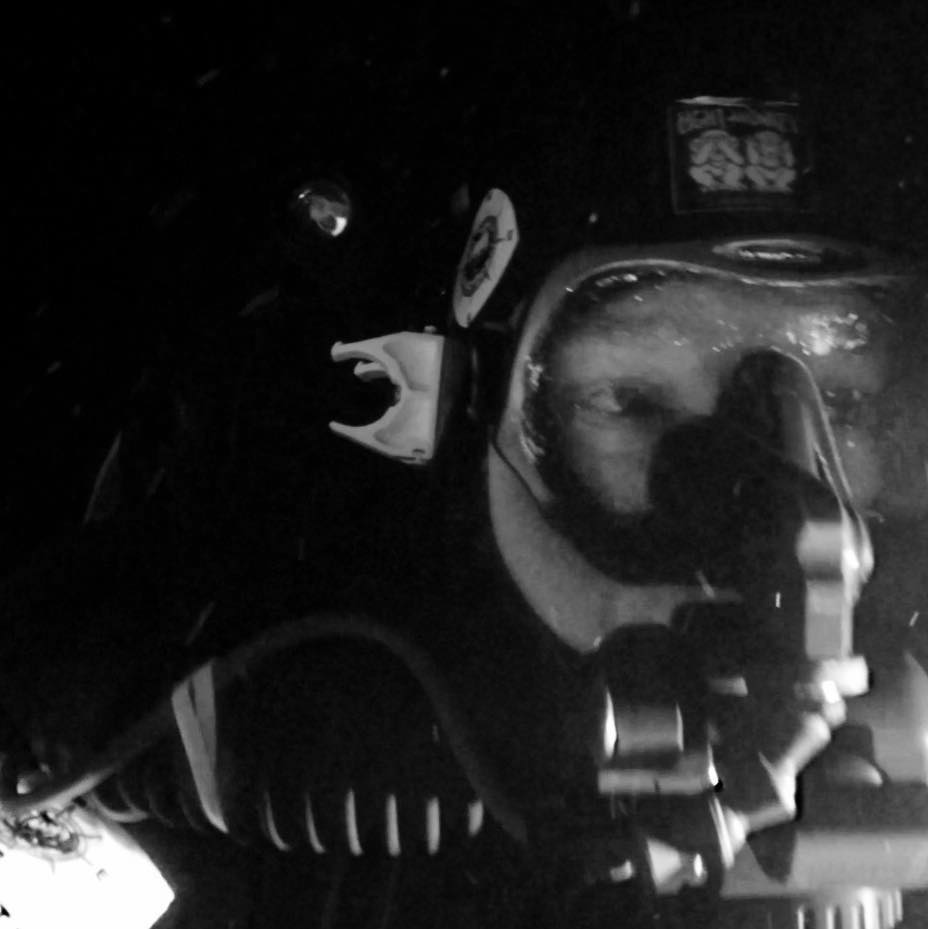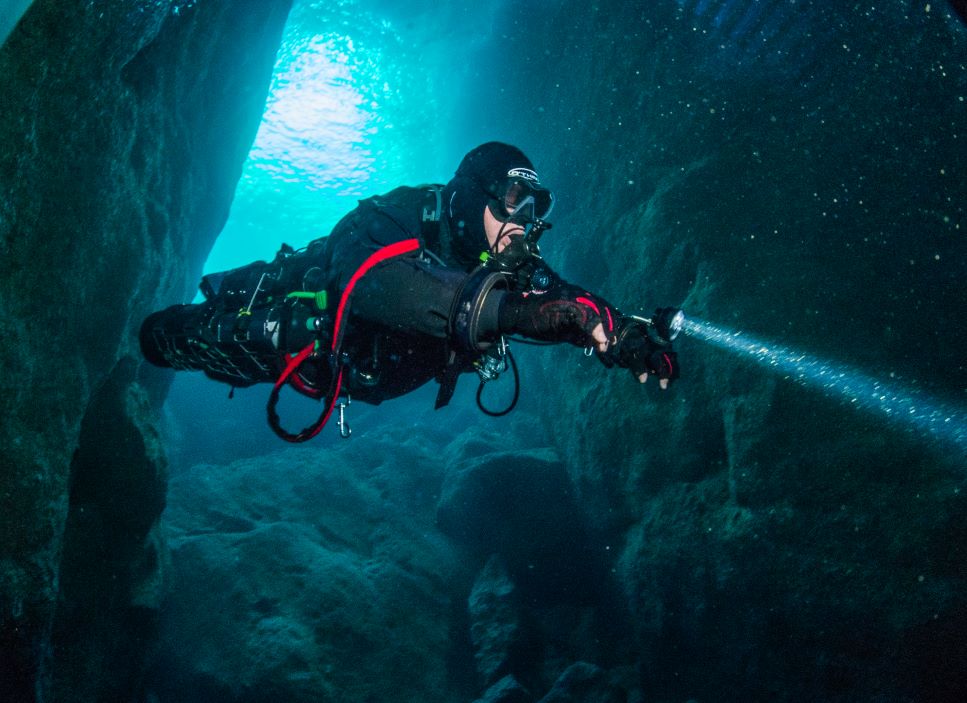BOV or no BOV
This is usually a polarised argument. People are either all for or all against. So, let us examine the arguments from both sides. I’m going to put in some assumptions though. To me they are not assumptions, mainly because I have tested these in dry chamber dives or if safe to do so in the water.
Assumption 1 – You only bailout from an unbreathable loop. In the case of hyperoxia (too much O2) Hypoxia (too little O2) this bailout is temporary till you shutdown, on board/offboard gas, manually correct, exclude cells etc. In the case of hypercapnia (CO2) bailout is permanent. In the case of flood (unrecoverable) bailout is permanent.
Assumption 2 – You are well enough trained and mentally tough enough to only need to bailout fast from a CO2 situation with the resultant massive ventilation increase, all others give you anything from a few seconds to a couple of minutes to bailout without any more than a minor stress increase in ventilations.
Assumption 3 – You need at least 30 minutes of OC gas at 45 lmin to 70 lmin as an absolute minimum to bail on to. This is because a CO2 hit takes at least 30 mins to recover from to the point where ventilations return to relatively normal.
Argument 1.
A BOV is the only thing that will save your life if you have a CO2 hit. This is because in a CO2 hit your ventilations rise to the level where switching to an open circuit regulator would be impossible.
For… This has some truth, depending on the function of your BOV as it switches CCR to OC. Some divers report it’s the only way they could have switched when getting into or having a CO2 hit. A hit happens fast and easily if your scrubber, bypass seals or mushroom valves have failed so a quick easy switch is good, of course.
Against… Every BOV has a point as you turn the valve from closed to open circuit where there is no gas flow (OC or CCR) at all. If you are deep in a CO2 hit as you pass this point and hyperventilating, you could easily spit the mouthpiece.
Against… Pack your scrubber correctly, check your seals, pre-breathe, check mushroom valves, do not exceed scrubber durations and the chances of a CO2 hit are minimal.
Against... Whatever you use, BOV, necklaced OC reg, stage bottle, if you get into a CO2 hit switching to OC in any method is a problem, bailout early; stay off loop, don’t go back and ‘test it’ if there is any chance it was CO2.
Against… There is a technique I teach on my CCR rescue course where an OC reg can create a breathable bubble under the DSV by being free flowed allowing a switch in a hyperventilating situation to an OC reg. It uses a lot of gas, so allow for it in planning, (so does having a CO2 hit) but this negates the ‘you’ll never switch to OC mid hit argument’ in most circumstances
Argument 2.
A BOV is always connected to a breathable gas so no issues over gas switch protocols in an emergency.
For… True, if you never dive hypoxic mixes.
Against… A well trained CCR diver will always rotate the ‘ideal’ bailout stage bottle to be the one they can grab a reg off without having to check. Usually top left. A MODS/NOTOXIC routine is not appropriate for bailouts. Moving unsuitable bottles behind them on a leash or to the right side if preferred makes this easy. A CCR diver can connect and disconnect their BOV to suitable gas sources this way, but it is an extra step over the bottle rotation.
Argument 3.
A BOV is better to use all the time against the rare chance of a CO2 hit.
Against… A BOV can never because of design compromises breathe as well as a DSV only (dive surface valve) so you then tolerate compromised work of breathing on every dive against the 1 in 10,000 chance of a CO2 hit. Assuming you don’t take shortcuts with scrubbers, fresh lime, equipment prep and maintenance those are fair odds.
Against… Time and switches. What is the BOV connected to? If it’s a 3-litre diluent then you just gave yourself 60 seconds to sort the issue at any technical depth. Your ‘recovery’ from a CO2 hit will take 30-45 minutes or more at a sac rate well over 45 l min and could be 80-100 plus. Even if connected to an 11-litre off board, you still need to make switches in the ascent and you may be making, or trying to make the first switch much sooner than you have recovered enough to go full open circuit. Even if you have enough gas in the deep bailout, you will still be on gassing and messing up your deco schedule and gas calculations.
Against… BOV’s are heavy in the mouth leading to jaw fatigue on longer dives
Where is a BOV useful?
- Shallow water diving where you carry the bailout entirely on the CCR. A BOV connected to onboard twin 7’s gives you 14 litres of useable gas. As you are shallow and should have no or very limited deco this will get you to the surface. This rig is simple, and self-contained for rib and boat diving albeit heavy. You still need a necklaced OC reg for redundancy or possible donation.
- In a cave. I may not in a cave always have an ability to reach or rotate stages. Lots of caves have squeezes or restrictions that can clog second stages with sediment or gravel. I like a BOV in a cave. As I mostly scooter or swim a lot slower in a cave, the compromised work of breathing is ‘just’ acceptable. My rule though is the BOV must be connected to at least 30 minutes of gas.
Conclusion.
Don’t believe you can be having a full on CO2 hit while managing an ascent in open water – no shot line, deploying an smb, finding teammates with team gas and making stops. If you think this is amount of task loading is possible to manage in a situation where CO2 and N2 narcosis, stress, O2 depletion and physical challenge all come at once and where the consequence is severe to fatal, please sell your gear and take up knitting.
Use a DSV for open water, deep and hypoxic diving. Use stage rotations to keep the best bailout on top and the reg necklaced or to hand. Bailout at the very first and smallest hint that anything CO2 related is occurring.
A BOV is only essential in one case where you cannot reach an OC reg quickly, then bear in mind the ‘no breath’ part of turning the valve. Otherwise dependent on circumstances, it is convenient rather than advantageous and carries several downsides, WOB and weight in the mouth on every dive being the most significant. I’ve used a range of OEM and aftermarket BOV’s and so far the only one I really like is the Divesoft. Neutral in water and probably best in class wob.
Matt
Matt Jevon, M.Sc. F. IoD is a Full Expedition level Trimix and Cave instructor on OC and CCR with TDI and ANDI. He is the JJ-CCR and Divesoft Liberty Sidemount instructor and dealer for Ireland. Matt’s personal diving has included cave exploration in the Philippines, wreck projects in Croatia and Ireland as well as being one of the inaugural dirty dozen in Truk! Matt has held accreditations as an interdisciplinary sports scientist, sports psychologist with BASES and was a British Olympic Registered Strength and Conditioning Coach and invitee on the Olympic Psychology Advisory Group. Matt works in high performance business as a board advisor and non-exec, high performance sport and is a partner in South West Technical Diving in Ireland. www.swt.ie and writes the Facebook page Psychological Skills for Diving
#tdidivecentre #andifacility #Apekstechnicalcentre #caveinstructor #jjccrfactoryservicecentre #JJCCR #ANDI #nolimitsexploration #cavediving #Apeks #divesoft #sidemountccr #southwestech #nautilus #othree90ninety #divemorepostless #xdeep #TDI #technicaldiving #scaleolights #rebreathers #seacraft #kubidrygloves #sidemountessentialsinstructor #sidemountccr #libertyccr #jjccr_official #wedontsellwhatwedontdive #nobubbles #diving #deepdive #techdiving #technicaldiving #ccrdiver #underwater #trimix #wreckdiver #cavediver



